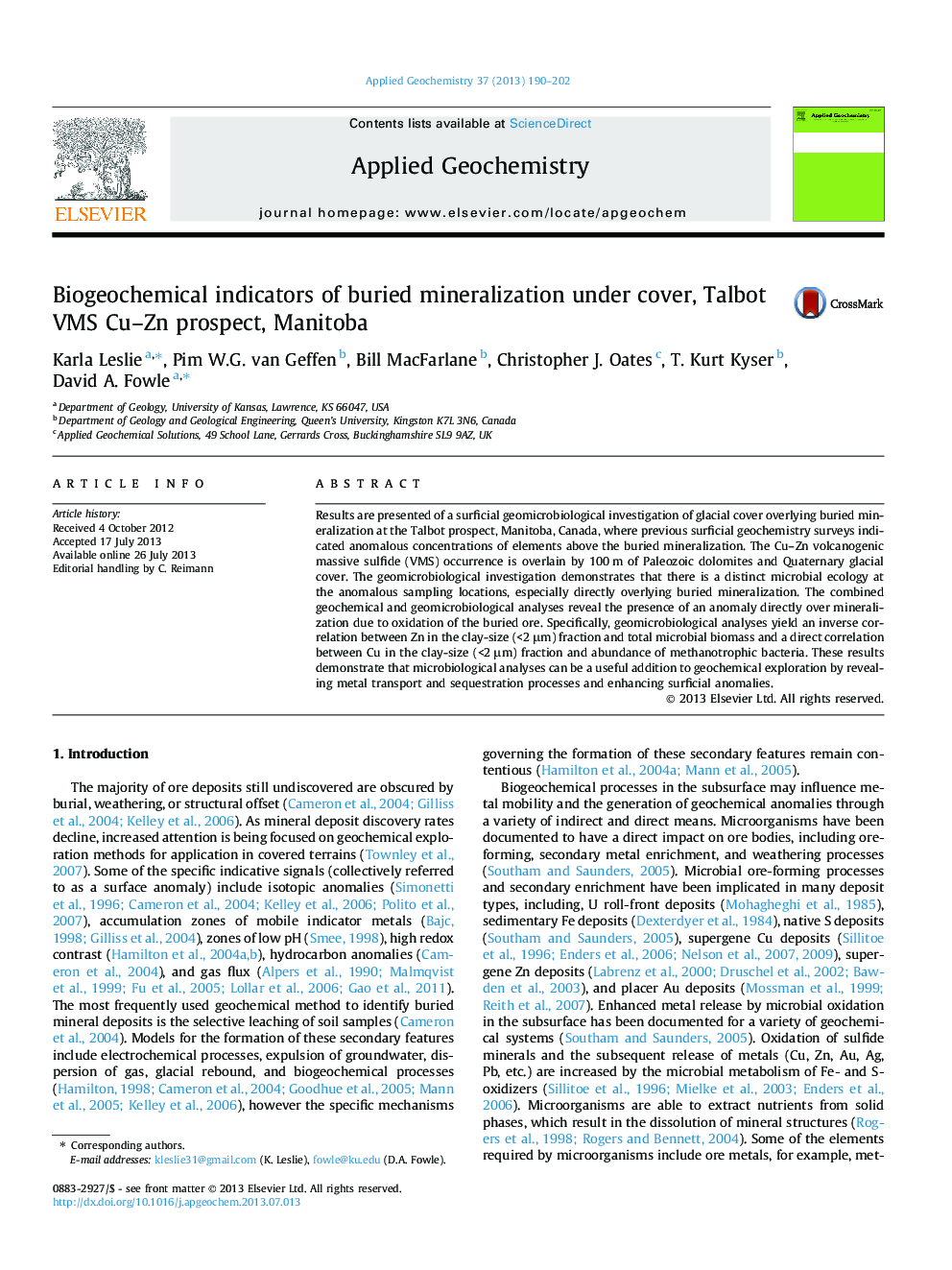| Article ID | Journal | Published Year | Pages | File Type |
|---|---|---|---|---|
| 6335313 | Applied Geochemistry | 2013 | 13 Pages |
â¢We investigated the geomicrobiology associated with a Cu-Zn VMS deposit.â¢An inverse correlation between Zn and total microbial biomass was revealed.â¢There is a direct correlation between Cu and abundance of methanotrophic bacteria.â¢Microbiological analyses aid in mineral exploration and enhance surficial anomalies.
Results are presented of a surficial geomicrobiological investigation of glacial cover overlying buried mineralization at the Talbot prospect, Manitoba, Canada, where previous surficial geochemistry surveys indicated anomalous concentrations of elements above the buried mineralization. The Cu-Zn volcanogenic massive sulfide (VMS) occurrence is overlain by 100 m of Paleozoic dolomites and Quaternary glacial cover. The geomicrobiological investigation demonstrates that there is a distinct microbial ecology at the anomalous sampling locations, especially directly overlying buried mineralization. The combined geochemical and geomicrobiological analyses reveal the presence of an anomaly directly over mineralization due to oxidation of the buried ore. Specifically, geomicrobiological analyses yield an inverse correlation between Zn in the clay-size (<2 μm) fraction and total microbial biomass and a direct correlation between Cu in the clay-size (<2 μm) fraction and abundance of methanotrophic bacteria. These results demonstrate that microbiological analyses can be a useful addition to geochemical exploration by revealing metal transport and sequestration processes and enhancing surficial anomalies.
